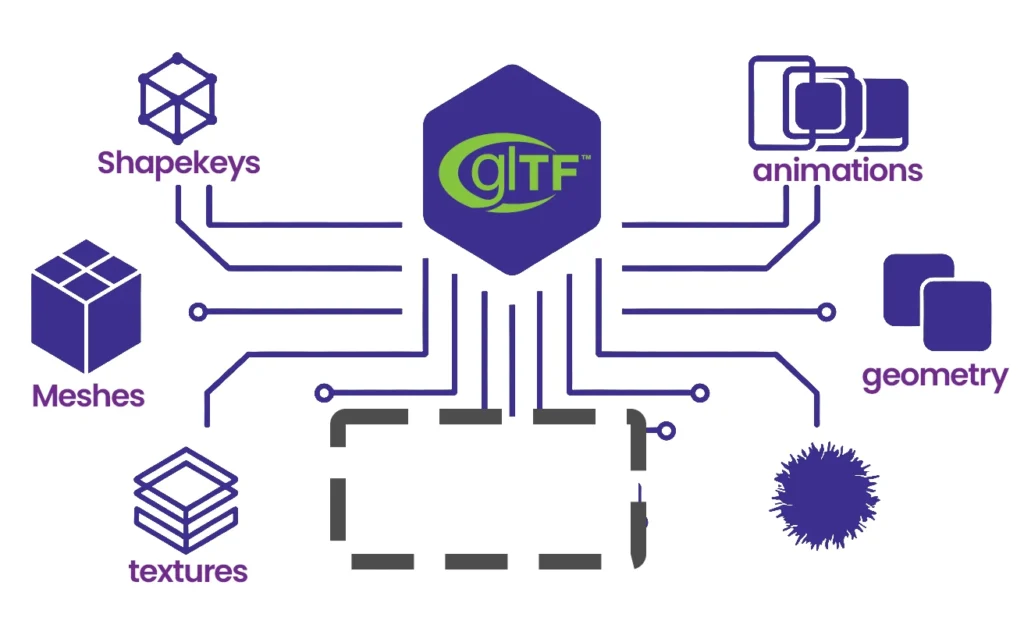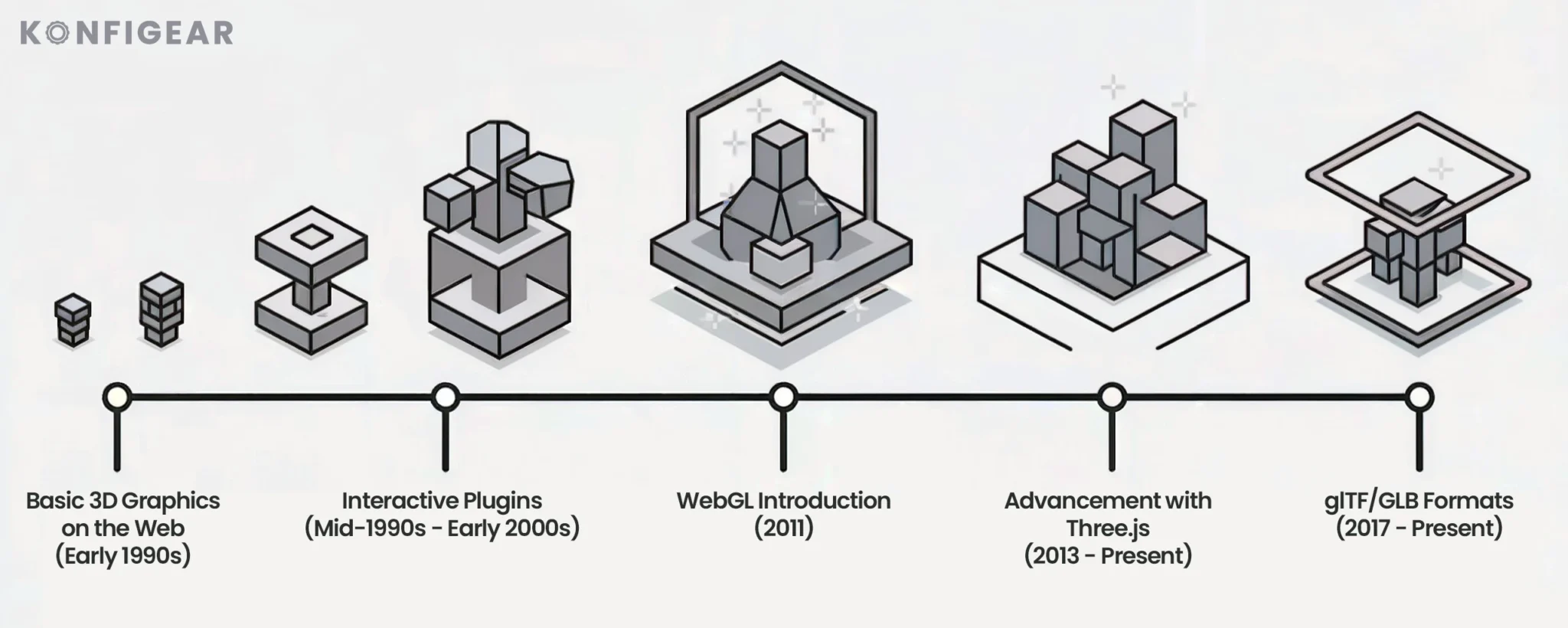Introduction to glTF and GLB
In the ever-evolving world of digital technology, the introduction to glTF and GLB has revolutionized how we perceive and utilize 3D models. These formats have swiftly become the cornerstone of 3D modeling and visualization, offering an efficient and streamlined way to handle complex 3D data. As a developer or designer, understanding these formats is crucial to optimizing performance and ensuring seamless integration across various platforms. This article embarks on a comprehensive exploration of glTF and GLB formats, providing a profound understanding of their significance in the digital landscape.
Understanding glTF and GLB Formats
Within the realm of digital 3D models, the glTF and GLB formats stand out as pivotal innovations. But what exactly are these formats, and how do they differ?
What is glTF?
The glTF (GL Transmission Format) is a file format designed specifically for 3D models. It is an open standard developed by the Khronos Group that facilitates the efficient transmission and loading of 3D scenes and models. What sets glTF apart is its focus on being a human-readable format, employing JSON (JavaScript Object Notation) for encoding information about the 3D scene.
What is GLB?
In contrast, the GLB format is essentially a binary format version of glTF. While glTF relies on separate files for assets like textures and shaders, the GLB format encapsulates all of these assets into a single binary file. This encapsulation simplifies the distribution of 3D models, making GLB files highly efficient for web and mobile applications.

History and Development
The evolution of glTF and GLB formats is rooted in a history of innovation and adaptation.

Origins of glTF
The concept of glTF was initiated by the Khronos Group in response to the growing need for a transmission format that could handle 3D models efficiently. Prior formats like OBJ and COLLADA were either too simplistic or too complex for rapid transmission, prompting the development of glTF as a middle ground.
Evolution to GLB
The introduction of the GLB file format marked a significant evolution in the usability of 3D models. By encapsulating all assets into a single binary file, GLB offered a streamlined solution for developers looking to optimize file size and loading times, particularly in constrained environments like mobile applications.
Technical Specifications
Diving into the technical realm, understanding the file structures of glTF and GLB is essential for effective utilization.
File Structure of glTF
The glTF format comprises a JSON descriptor containing metadata about the 3D scene, including information on nodes, meshes, and materials. Textures and other binary data are stored in external files, referenced by the JSON file. This separation makes glTF a flexible and human-readable option.
File Structure of GLB
Conversely, the GLB format integrates all components into a single binary file. This integration includes the JSON descriptor, textures, and binary data, all embedded within the GLB file. This structure enhances performance by reducing the need for multiple HTTP requests during loading.
Advantages of Using glTF and GLB
The adoption of glTF and GLB formats offers numerous benefits, particularly in terms of interoperability and performance.

Interoperability
Thanks to their open standard nature, glTF and GLB are highly interoperable across various platforms and software. This interoperability ensures that 3D models can be easily shared and utilized without compatibility issues.
Efficiency and Performance
Both glTF and GLB formats are optimized for efficient loading and rendering. By minimizing file size and reducing the number of necessary HTTP requests, these formats enhance performance, particularly in web and mobile applications.
Common Use Cases
The practical applications of glTF and GLB are vast and varied, spanning several innovative fields.
3D Web Applications
The use of glTF and GLB in 3D web applications is widespread. These formats enable seamless integration and visualization of 3D models directly in web browsers, enhancing user interaction and engagement.
Augmented Reality
In augmented reality (AR), the efficiency of GLB files is harnessed to deliver immersive experiences. The compact nature of GLB ensures that 3D models load swiftly, providing a smooth user experience in AR applications.
Virtual Reality
Virtual reality (VR) also benefits from the use of glTF and GLB. The formats' ability to handle complex 3D scenes with ease makes them ideal for VR environments, where performance is paramount.
Comparison with Other 3D Formats
When comparing glTF and GLB with other 3D formats, their advantages become even more apparent.
glTF vs. OBJ
While OBJ is a widely used 3D file format, it lacks the efficiency and modern features of glTF. OBJ files are often larger and require separate files for textures, making them less efficient than glTF and GLB.
glTF vs. FBX
FBX, although rich in features, is proprietary and can be cumbersome to work with. In contrast, glTF and GLB offer an open standard that is easier to implement and provides better performance in web and mobile environments.
How to Create and Edit glTF/GLB Files
Creating and editing glTF and GLB files involves utilizing specific tools and techniques tailored for these formats.
Tools and Software
Several tools and software applications support the creation and editing of glTF and GLB formats. Blender, Autodesk Maya, and glTF tools by Microsoft are among the most popular options available.
Conversion Techniques
Converting models to glTF and GLB is facilitated by various plugins and standalone converters. These tools allow for seamless transformation from other formats, ensuring compatibility and performance optimization.
Best Practices for Optimization
To maximize the benefits of glTF and GLB, adhering to best practices for optimization is essential.
Reducing File Size
Reducing file size is critical for enhancing load speeds and performance. Techniques such as mesh decimation, texture compression, and minimizing unnecessary data can significantly optimize file efficiency.
Enhancing Load Speeds
Load speeds can be further improved by employing methods like binary encoding and embedding resources directly within the GLB file. These strategies reduce the number of HTTP requests, ensuring faster load times.
Future of glTF and GLB
The future of glTF and GLB formats is promising, with ongoing developments and increasing industry adoption.
Upcoming Features
Innovations in the glTF ecosystem continue to emerge. Upcoming features focus on enhancing realism and interactivity, with improvements in lighting, animations, and physics simulations on the horizon.
Industry Adoption
As 3D content becomes more prevalent, industry adoption of glTF and GLB formats is expected to grow. Major tech companies and software developers are increasingly integrating these formats into their ecosystems, solidifying their role as the standard for 3D content.
Conclusion
In conclusion, understanding the intricacies of glTF and GLB is paramount for anyone involved in 3D modeling and digital content creation. Their efficiency, interoperability, and performance benefits make them indispensable tools in the modern digital landscape. For further exploration, you may refer to the Khronos Group's glTF page to stay updated on the latest developments and resources related to these formats.

